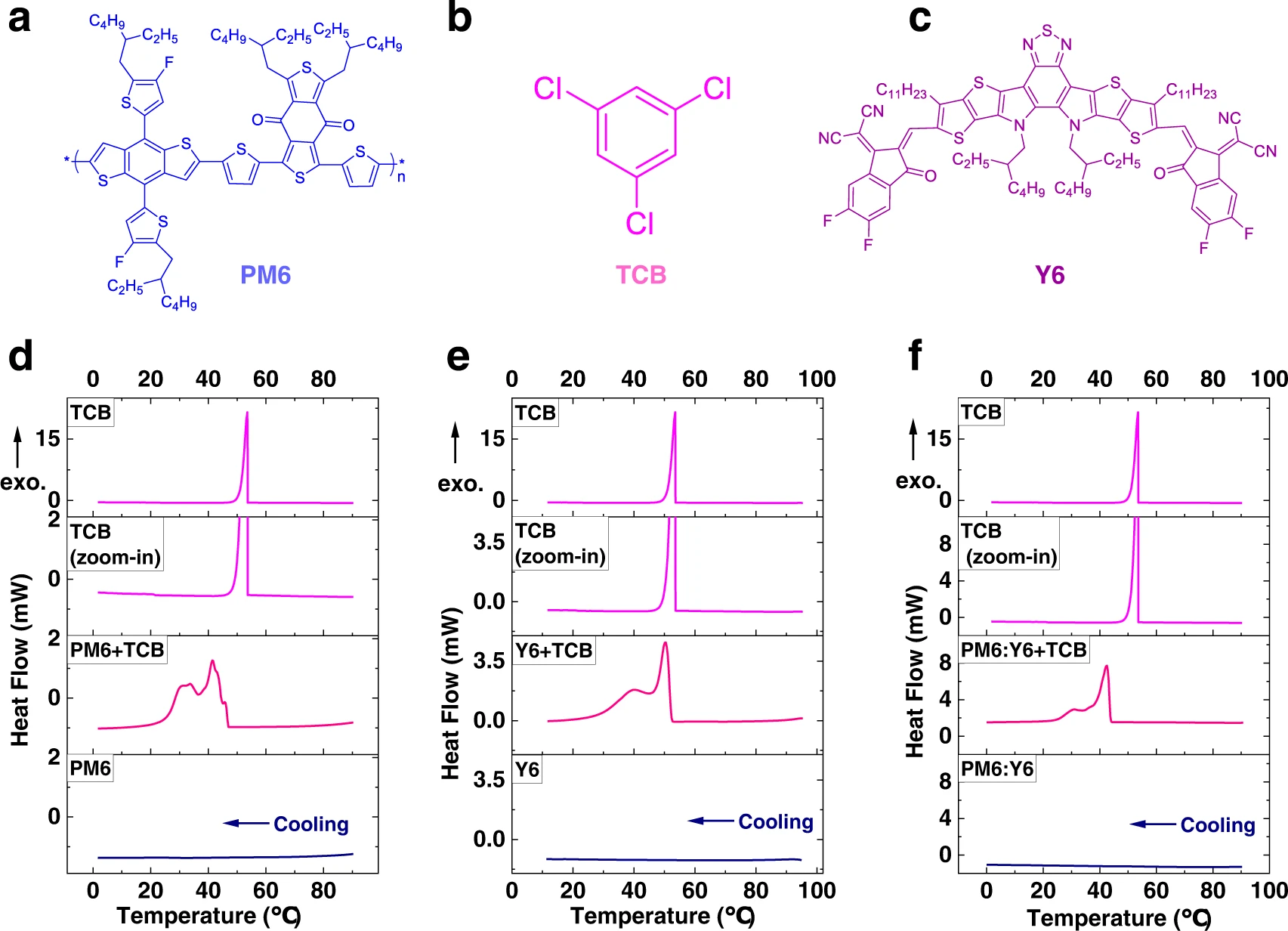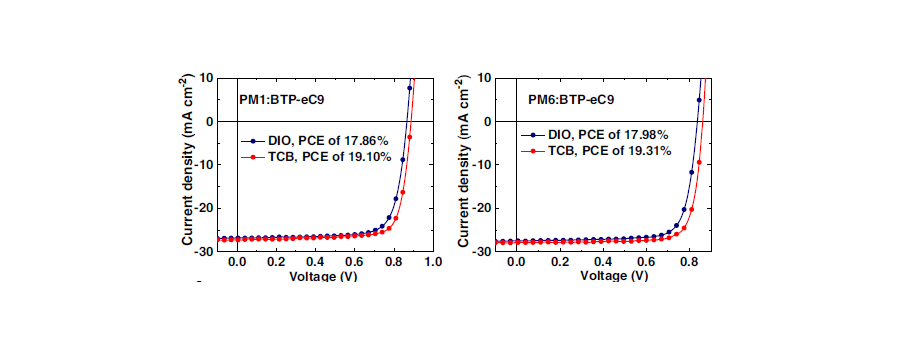A team led by Prof. LI Gang, Associate Director of the Otto Poon Charitable Foundation Research Institute for Smart Energy (RISE), Chair Professor of Energy Conversion Technology and Sir Sze-Yen Chung Endowed Professor in Renewable Energy at PolyU, invented a new technique which boosts the efficiency and stability of organic solar cells (OSCs), achieving a breakthrough power-conversion efficiency of 19.31% in binary OSCs.
Solar energy technology relies on a photoactive layer, i.e., a mixed layer of semi-crystalline electron donor and acceptor molecules which absorb sunlight and convert it into electricity. The manufacturing of OSCs involves crystallisation—a process in which raw materials are mixed with solvent to form a solar ink, which is then applied to a substrate of conducting glass and solidifies to form a thin crystalline film as solvent is removed. Crystallinity is important in determining the power-conversion efficiency (PCE) of OSCs. Too-slow, too-rapid, or unstable crystallisation on the layers can result in defects that undermine power generation performance. Controlling the crystallisation dynamics therefore helps to improve the PCE of organic solar cells.
The team developed a non-monotonic intermediated state manipulation (ISM) strategy to manipulate the bulk-heterojunction (BHJ) OSC morphology and simultaneously optimise the crystallisation dynamics and energy loss of non-fullerene OSCs. Whereas traditional solvent additives cause excessive molecular aggregation in films, the ISM strategy promotes the formation of molecular stacking and aggregation in an orderly and favourable way. With the use of the ISM method, the power-conversion efficiency of the OSCs increases considerably, and the undesirable non-radiative recombination loss, which impairs light generation efficiency, is reduced.
The findings have been published in Nature Communications. (https://www.nature.com/articles/s41467-023-37526-5)


Chemical structures of (a) PM6, (b) TCB, and (c) Y6. DSC thermograms (cooling process) for (d) PM6, PM6:TCB, and TCB; (e) Y6, Y6:TCB, and TCB; and (f) PM6:Y6, PM6:Y6:TCB, and TCB.





